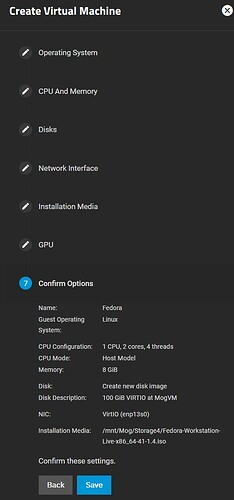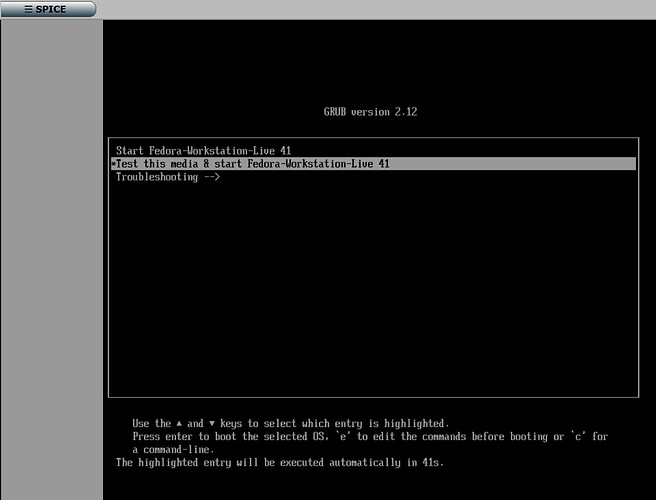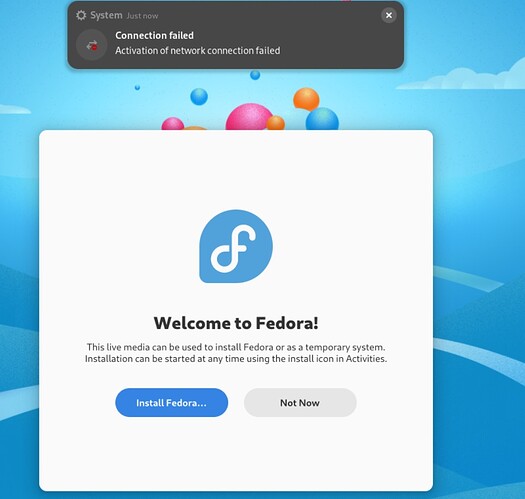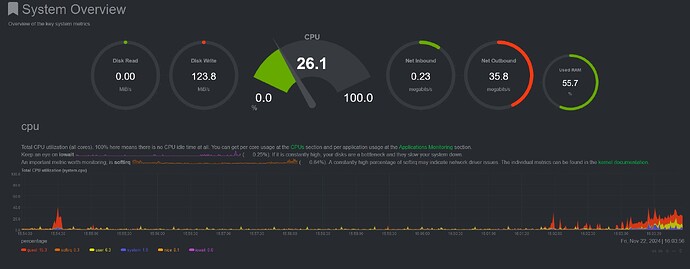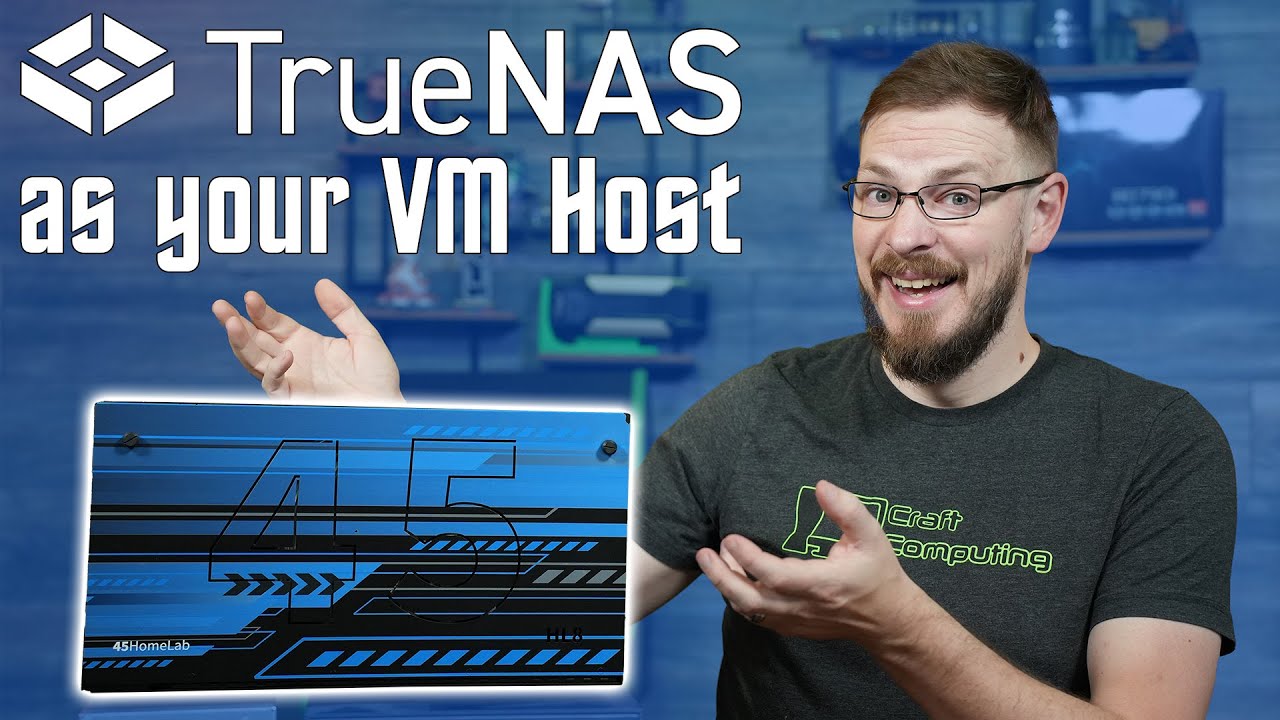to get more use out of this nas build im setting up vm
If you want to do the same, raidowl’s guide helped. though he was setting up for windows, i was doing it for fedora linux
there are a couple of things you can do with this. like the gpu pass through. connect the cable to monitor. but im not doing that, im instead using the virtual for monitor. im only using this as a test bed to experiment with linux os. so i can prep for changing to it once ive gotten use to it.
with the linux fedora desktop os running, the cpu resource is now being used more
this is why i didnt want to low ball too much on cpu, cauz i wanted to do something like this. in future i may use gpu passthrough to connect to monitor directly and with a proper graphics card. but for now this will suffice.
*update
i’ll explain a few things for using truenas vm for e.g. fedora os
If you are not using the graphics card passthrough (i didnt), then you click on the truenas display button for spice.
The thing is, spice browser is SUPER SUPER… super slow… barely usable. Scrap that. Not usable ![]()
How to fix this?
apparently if you’re using windows desktop like i am, download the virtviewer from the spice website for windows. once installed, there is no clear thing to execute. so browse to C:\Program Files\VirtViewer v11.0-256\bin look for remote-viewer.exe and double click it.
in there add e.g.
spice://192.168.0.5:5900
Replace the ip and port to your own. To find the port, go to truenas vm, devices, display. The port is listed there. As for the IP that depends on your vm network setup. E.g. mine was 0.0.0.0 which basically means localhost which is the nas ip.
Then when you done that, it prompts you for a password. It’s also when you first setup truenas vm it asks you to put a password, use that.
Now you are logged in.
It’s not as good as bare metal (when i say this, im nit picking for a few miliseconds in responsiveness when navigating the ui. which basically isnt much of a big deal unless your fussy)but it was 1000000 (added a couple extra zeros for good measure since that was just how bad it was) times better than spice browser ![]()
hope that helps someone. Anyway someone really needs to make a youtube explaining this. all the youtubes were old which explained vnc (which got removed in favor of spice). And also they skip out the part that spice browser is awful without explaining a solution.
PS: once installed, dont forget to delete the cdrom device. or else everytime when you boot the vm it will bug you to install it anew.
*update
if you need a quick intro to fedora, this helps
The main part is how to add your truenas shares to the fedora workstation desktop
Head to files. in the address bar, type smb://192.168.0.5
replace the ip for your truenas ip
then it will prompt you for
- username
- password
- domain
the default domain is SAMBA, leave that as is (assuming you are accessing truenas samba share)
then the credential is whatever user has access to the share. Once done it is connected.
Done
*update
craft covers how truenas fares for vms 2024
it seemed ok for my simple needs, but craft goes in and nitpicks on where it’s weak at, and where it did fine.
i 200% agree the spice browser was bad. but i found a solution to that which made it usable again.
tldr: craft reckons if u need vm, then setup proxmox as host, then run truenas as a vm using it.
for myself, the vm isn’t my primary use case. and what i tried so far, works. so i’m not too bothered about that. (i did not test graphics pass through)
anyway my point is, setup this sort of build for proxmox host, truenas as vm under it. or do what i did (truenas baremetal) if your use case is basic and not really for vms.
